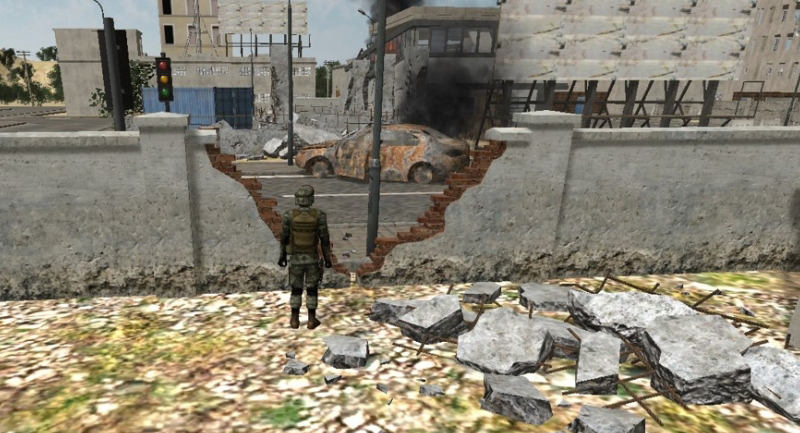Military training is essential to improve preparedness and responsiveness in war theatres and critical settings. Commanders and field units are called to face complex situations where the ability to take the right decision at the right time is crucial for the mission success and, in some cases, makes the difference between life and death.
Our solutions, developed starting from research projects carried out in collaboration with partners of excellence (University of Genoa, CAE, Leonardo, University of Calabria), offer interactive and interoperable virtual environments for training, in complex scenarios, of the Commander and his Staff.
Our solutions include Serious Games that combine enabling technologies and methodologies (eg interoperable simulation based on the standard IEEE HLA 1516-2010 Evolved, Virtual Reality and Mixed Reality Viewers, Stand-Alone Training using mobile devices, etc.) to ensure realistic exercises with great intensity and involvement. Our solutions meet Customer’s needs and are able to combine training objectives and simulation solutions eventually available at Customer premises (in accordance with the principles of interoperability and reusability of simulation solutions).
VIC & VIS
VIC (Virtual Interoperable Commander) and VIS (Virtual Interoperable Simulator) are two simulation solutions specifically designed to train the commander and his team to solve critical situations in multi-coalition and multicultural scenarios where human factors play a crucial role.
VIC simulates the Decision Center where the Commander and his team act while VIS simulates, in a virtual, 3D, Interactive and Immersive environment the operational scenario. Training scenarios are defined in terms of MEL / MIL and on each MEL / MIL it is possible to evaluate the effects of different Courses of Actions (COAs).
From a Serious Games perspective, COAs affect scenarios evolution over time generating effects on the military capabilities of involved resources as well as effects on the population behavior.
A complete training for the Commander:
Have a common operational picture of emergency risks
Estimate potential risks related to emergency evolution
Cooperate with other people involved in the same simulation
Define the actions to carry out considering procedural aspects and constraints
Develop reaction capabilities to stocastically generated accidents (such as fire, explosion, failures, etc.)
Take into account constraints and boundary conditions (i.e. Availability of resources, meteorological conditions, etc).
Legal and administrative residence:
Via Spagna 240,
87036 Rende (CS) – Italy
C.F./P.IVA 03133320782
Registro delle imprese di Cosenza
N REA CS – 213383

copyright © CAL-TEK Srl
Operational headquarters:
Via P. Bucci 45C,
87036 Rende (CS) – Italy
T: +39 0984 494891
F: +39 0984 494891
E-mail: info@cal-tek.eu
Operational headquarters:
Via Leuca 174
73100 Lecce – Italy
T: +39 0832 349659
F: +39 0984 494891
E-mail: info@cal-tek.eu









